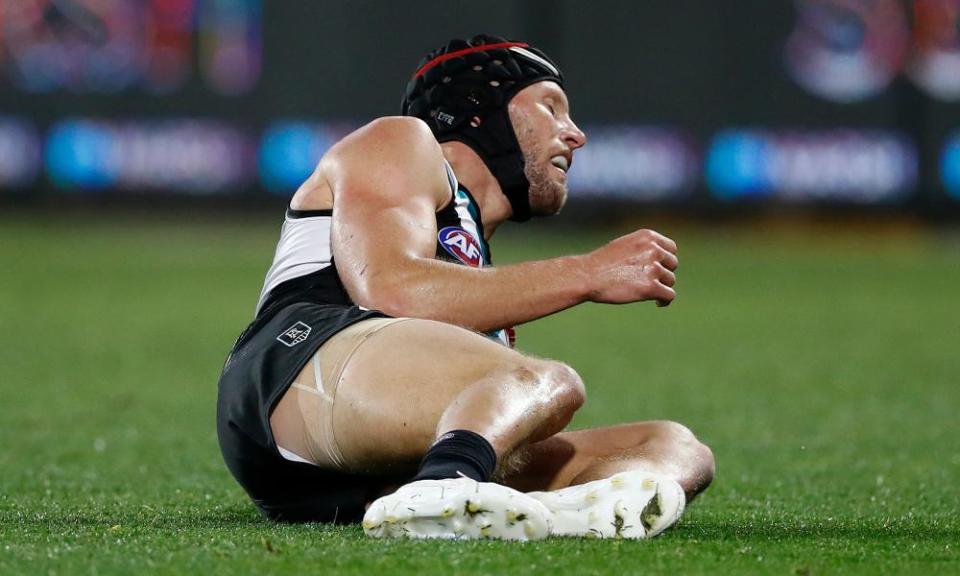AFL issues tighter protocols amid heightened concern over concussions

On the day the fifth edition of AFLW gets under way, new guidelines around head trauma have been issued, with players to be sidelined for at least 12 days if they suffer a concussion.
The AFL on Thursday confirmed players in its men’s and women’s competitions this year would be required to sit out a minimum of one game in the event of a concussion, assuming regular fixturing, and potentially more depending on clinical symptoms.
Related: Australian rules football cases show players' head trauma is a global issue | Andy Bull
The AFL’s guidelines on head injuries are updated annually and this year’s tightening of protocols – which represents a doubling of the mandated recovery time – comes amid an increasingly high-profile conversation over the impact of concussion on athletes.
The AFL said the new protocols were a “substantive increase” on the six days required under last year’s guidelines and a “significant step” in improving its concussion management strategy.
“The updated guidelines are the most stringent concussion protocols in Australian sport and we are committed to continuing to take action to protect the safety of players at all levels of the game,” AFL general counsel Andrew Dillon said.
“The reality is we play a contact sport and there is always going to be risk, however over recent years we have continued to take action to strengthen match-day protocols and amend the laws of the game to discourage high contact.”
The link between playing contact sport and head trauma, including chronic traumatic encephalopathy, is becoming ever more clear: the late former Richmond player, Shane Tuck, was found to have a severe case of CTE, while the degenerative brain disease was also found after the deaths of former players Polly Farmer and Danny Frawley.
The connection has been difficult to prove in the past, as CTE can only be diagnosed post mortem.
The AFL says it is committed to minimising the impact of head injuries, and is currently in the final stages of interviewing for a new role – a concussion lead – with the successful candidate to be announced in the next few weeks.
The post will consolidate a wide range of duties concerned with head trauma, including the league’s management and response to concussions, research into its effects, compiling data and developing an action plan.
Related: AFLW is a premium sporting product. Is it still undervalued in its fifth season? | Megan Maurice
“We continue to listen and learn and take action and the new role will specifically focus on the work that we are doing as an industry – both at the elite and community level – to deal with the important topic of concussion,” Dillon said.
The latest AFL and AFLW guidelines reflect recommendations made by the most recent Concussion in Sport International Conference in 2016, with additional incremental improvements based on other advancements since then.
Further international guidelines were expected out of a Concussion in Sport Group conference to be held in Paris late last year, but due to the impacts of Covid-19, that meeting has been delayed until October 2021.
Dillon said the AFL’s latest return-to-play guidelines represented a conservative approach, given heightened concerns and difficulties in objective assessment of head trauma.
The AFL will take further guidance from the rearranged conference later this year and incorporate updated protocols for next season.

 Yahoo Finance
Yahoo Finance 